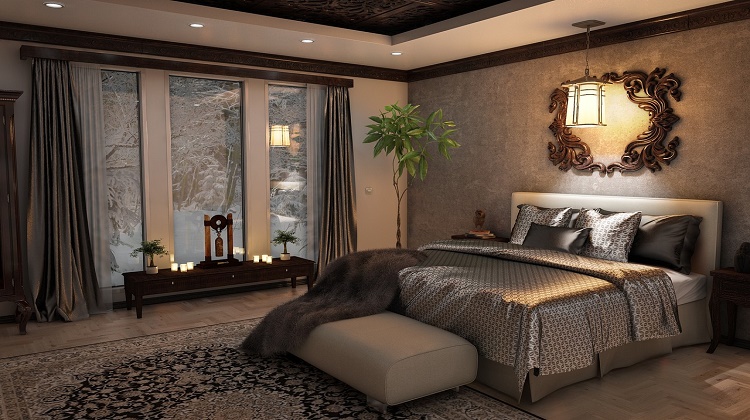
Sustainable furniture is becoming increasingly popular among consumers. It’s a great way to be creative and reduce your environmental footprint while creating a unique interior that will last you for years.
When shopping for sustainable furniture, look for reputable brands transparent about their manufacturing processes and supply sourcing. They should also participate in third-party certification programs and emphasize continuous improvement.
Materials
Sustainable furniture is a growing trend in interior design. These pieces are produced from natural materials that don’t harm the environment or your health. They can also be more durable and last longer than traditional pieces.
The materials used in sustainable furniture can include organic, natural fibers; recycled materials like post-consumer plastic bottles and paper; and sustainably sourced wood. They can also be made with low-impact manufacturing practices that don’t contribute to greenhouse gas emissions.
Many of these products also come with certifications from organizations ensuring that the raw materials are sourced from sustainable forests. This can prevent the exploitation of forests, vital for the planet’s health and well-being.
Purchasing furniture that has been manufactured locally will help reduce your carbon footprint, as transport to and from your home is energy-intensive. Look for energy-efficient transport options and manufacturers who use minimal packaging when shipping their goods.
These products can be more expensive than conventional furniture, but they are worth the extra expense as they last longer and won’t end up in landfill sites. They’re also a great way to save money on monthly utility bills.
As the world struggles to tackle a climate crisis, there’s an increased demand for eco-friendly furniture. Fortunately, the future of interior design is bright, with more companies opting for greener solutions.
Design
The future of interior design is sustainability, and if you’re looking for furniture to fit your eco-friendly aesthetics, there are plenty of options. You can opt for reclaimed wood, natural materials like bamboo or wicker, and recycled plastics that are both beautiful and eco-friendly.
Choosing the best sustainable furniture companies takes extra steps to reduce their carbon footprint throughout manufacturing. This can include curbing their carbon emissions, ensuring they don’t harm any communities, and paying their workers fairly.
Another critical feature of sustainability is durability. A durable furniture piece should be able to withstand many years of use. This means it is less likely to break down quickly or need replacement, saving you money and energy resources in the long run.
You can also look for eco-friendly materials, such as bamboo, a rapidly renewable resource that can be harvested without destruction. Recycling is also easy, making it even more environmentally friendly.
There are several different types of sustainable furniture, but they all have a common theme – they’re designed to be functional and versatile. They can be used in multiple ways and are made of high-quality materials that will last a long time.
Recyclability
The ability to recycle is a critical factor in sustainable furniture. It means that the materials used in furniture can be reused and repurposed in other ways – and it can also mean that they can last for more extended periods.
Sustainability is the idea that resources should be used in an environmentally responsible, socially just way. It’s about finding the right balance between environmental protection and economic growth.
Ultimately, we must use more than we take from the environment. We must also ensure that we don’t deplete the resources available to future generations.
One way to do this is by sourcing local materials and manufacturing the items locally. This reduces energy use and transportation costs and can also help improve a product’s quality.
Another way to ensure that your products are sustainable is by choosing a manufacturer with ethical practices. Look for companies that pay their employees well, provide them with benefits, and stay active in the communities where they operate.
Sustainable and ethically made furniture is often high-quality and long-lasting. This means that it won’t need to be replaced as often as products made from traditional materials, which can save you money in the long run. Investing in a piece that can be cherished for years is also a great option.
Sustainability
Regarding interior design, sustainability is all about choosing materials that are good for the environment and humans. This can include choosing natural products over synthetic ones, using low-VOC paints and stains, and making your home a more comfortable place to live in.
Furniture manufacturers can take several steps to make their furniture more sustainable, including using responsibly harvested and recycled wood. They can also reduce their energy consumption, use water-based finishes instead of chemical ones, and choose biodegradable materials.
Sustainable furniture is a growing trend because it reduces the amount of waste in landfills. It is also better for the environment because it produces less energy than new furniture.
Some of the most sustainable pieces of furniture can be made from reclaimed wood, which gives a second life to materials that would otherwise be thrown away. This is especially true of old boat ruins and unused lumber from construction sites, which can be turned into beautiful, sturdy furniture pieces with great care and love.
Many makers are now using reclaimed and sustainably sourced materials to create long-lasting, durable, and stylish pieces of furniture that can be enjoyed for years. Whether you are looking for the perfect dining table, coffee table, or wardrobe, it is possible to find a piece of sustainable furniture that fits your style and needs.






